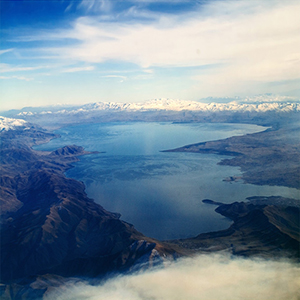Contemporary community composition, spatial distribution patterns, and biodiversity characteristics of zooplankton in large alpine Lake Sevan, Armenia

Submitted: 25 July 2023
Accepted: 5 November 2023
Published: 23 November 2023
Accepted: 5 November 2023
Abstract Views: 441
PDF: 96
Supplementary: 19
HTML: 1
Supplementary: 19
HTML: 1
Publisher's note
All claims expressed in this article are solely those of the authors and do not necessarily represent those of their affiliated organizations, or those of the publisher, the editors and the reviewers. Any product that may be evaluated in this article or claim that may be made by its manufacturer is not guaranteed or endorsed by the publisher.
All claims expressed in this article are solely those of the authors and do not necessarily represent those of their affiliated organizations, or those of the publisher, the editors and the reviewers. Any product that may be evaluated in this article or claim that may be made by its manufacturer is not guaranteed or endorsed by the publisher.
Similar Articles
- Roberto Bertoni, Filippo Bertoni, Preserving the heritage of limnology in Italy , Journal of Limnology: Vol. 80 No. 3 (2021): Celebratory Issue - 80th Anniversary of the Journal of Limnology
- Jon N. SWEETMAN, Kathleen M. RÜHLAND, John P. SMOL, Environmental and spatial factors influencing the distribution of cladocerans in lakes across the central Canadian Arctic treeline region , Journal of Limnology: Vol. 69 No. 1 (2010)
- Mariano Bresciani, Claudia Giardino, Rosaria Lauceri, Erica Matta, Ilaria Cazzaniga, Monica Pinardi, Andrea Lami, Martina Austoni, Emanuela Viaggiu, Roberta Congestri, Giuseppe Morabito, Earth observation for monitoring and mapping of cyanobacteria blooms. Case studies on five Italian lakes , Journal of Limnology: Vol. 76 No. s1 (2017): Aquatic biomonitoring: Lessons from the past, challenges for the future
- Paolo Villa, Monica Pinardi, Viktor R. Tóth, Peter D. Hunter, Rossano Bolpagni, Mariano Bresciani, Remote sensing of macrophyte morphological traits: Implications for the management of shallow lakes , Journal of Limnology: Vol. 76 No. s1 (2017): Aquatic biomonitoring: Lessons from the past, challenges for the future
- Mattia M. Azzella, Mariano Bresciani, Daniele Nizzoli, Rossano Bolpagni, Aquatic vegetation in deep lakes: Macrophyte co-occurrence patterns and environmental determinants , Journal of Limnology: Vol. 76 No. s1 (2017): Aquatic biomonitoring: Lessons from the past, challenges for the future
- Valeria Di Nica, Sara Villa, Valeria Lencioni, Environmental concerns about the effects of effluents from wastewater treatment plants in tourist areas of the Alps: toxicity in aquatic microorganisms , Journal of Limnology: Vol. 80 No. 3 (2021): Celebratory Issue - 80th Anniversary of the Journal of Limnology
- Claudia Piccini, Daniel Conde, Jakob Pernthaler, Ruben Sommaruga, Photoalteration of macrophyte-derived chromophoric dissolved organic matter induces growth of single bacterial populations in a coastal lagoon , Journal of Limnology: Vol. 72 No. 3 (2013)
- Oscar RAVERA, Gian Maria BEONE, Pier Renato TRINCHERINI, Nicoletta RICCARDI, Seasonal variations in metal content of two Unio pictorum mancus (Mollusca, Unionidae) populations from two lakes of different trophic state , Journal of Limnology: Vol. 66 No. 1 (2007)
- Pranay Sharma, Alexey A. Kotov, Establishment of Chydorus sphaericus (O.F. Muller, 1785) (Crustacea: Cladocera) in Australia: consequences of mass fish stocking from Northern Europe? , Journal of Limnology: Vol. 74 No. 2 (2015)
- Tadeusz Penczak, Despite anthropogenic disturbance and moderate climate changes fish density and biomass fluctuated non directionally in a small stream , Journal of Limnology: Vol. 74 No. 2 (2015)
<< < 43 44 45 46 47 48 49 50 51 52 > >>
You may also start an advanced similarity search for this article.

 https://doi.org/10.4081/jlimnol.2022.2150
https://doi.org/10.4081/jlimnol.2022.2150






